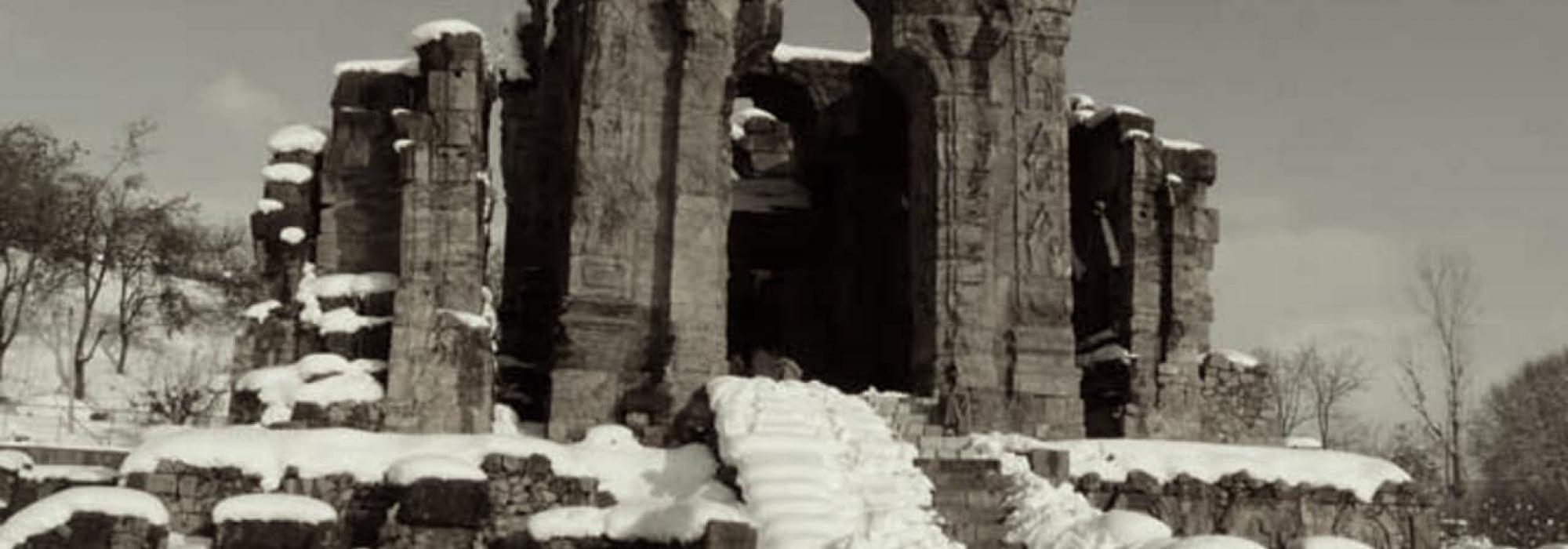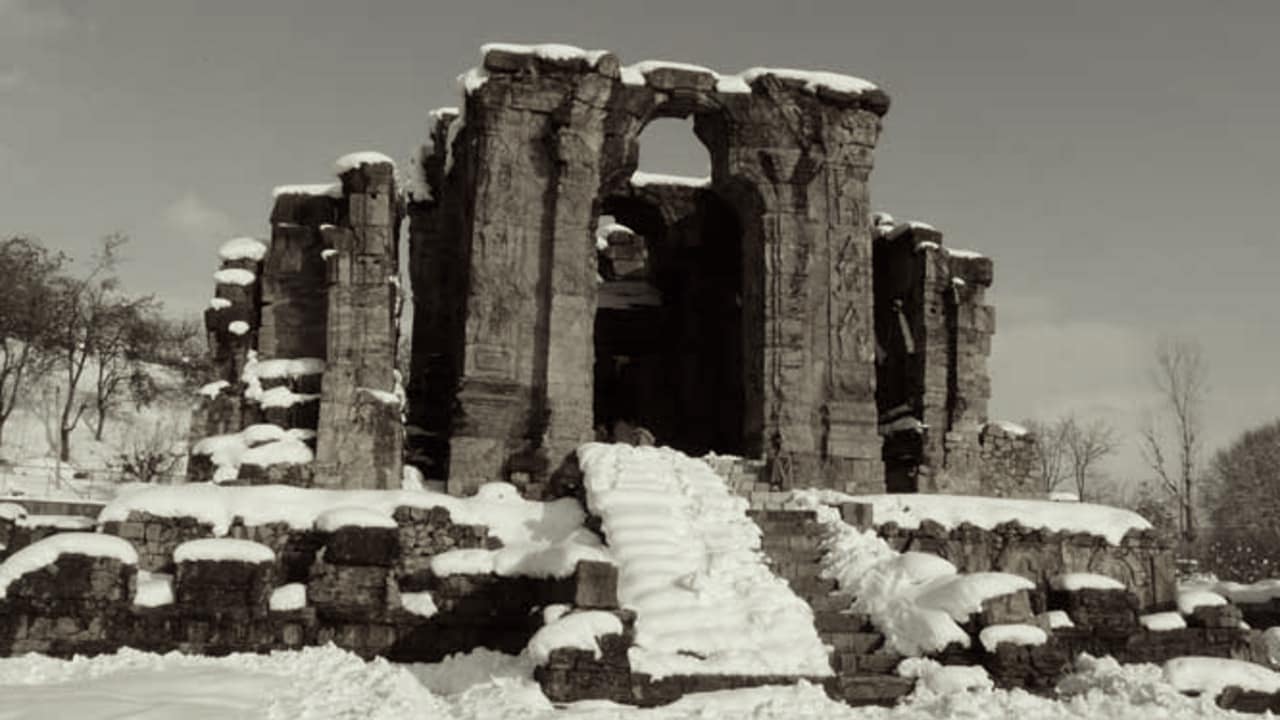Kalhana in his
Rajatarangini (11
th Century CE) has written about
Chandrapida, the ruler hailing from the
Karkota dynasty. He was renowned for delivering justice as well as for his extraordinary valour.
Chandrapida (6
th Century CE) decided to build the
Narayana Temple in
Parihasapura (today’s Paraspore). The land where the temple was proposed to be built belonged to a cobbler. When the royal officers offered money to him to buy the land, he refused. And when this official pressure escalated, the cobbler directly petitioned the king. He didn’t stop just at that. He also appealed stating the reason for not parting with the land and further requested the king to come to him and adjudicate the matter.
When the king
Chandrapida visited the cobbler’s house, he said, “My land has been bequeathed to me by my ancestry: my father, grandfather, and great grandfather. Therefore, it’s impossible for me to part with it.” The king concurred with him and assured him that he would not take the land away by force. Later, the cobbler appreciated the fact that the king had personally come to his house and came forward and donated his land. However, the king refused to accept the land as a donation, paid a fair price for it and acquired it.
What is noteworthy in this episode is the fact that the king himself came to the doorstep of a person considered as “lower class.” There was really no system of untouchability in that period. Feelings of societal discrimination was not pervasive.
Once when a Brahmana through deceit and skullduggery killed another Brahmana, the king
Chandrapida awarded severe punishment to the criminal Brahmana.
In this instance, we can note the fairness and non-discriminatory practice of statecraft.
Lalitaditya, the son of
Chandrapida ascended the throne as his successor. He defeated the king of Tibet and established good relations with the Emperor of China. Because Kashmir was a strategic place and shared borders with numerous other kingdoms,
Lalitaditya secured all his frontiers. He kept the
Dardas, Kambhojas and the
Turks at bay. He also instilled fear into the hearts of numerous barbaric tribes in the region and prevented them from entering Kashmir.
Lalitaditya waged war against the formidable king of Kanyakubja,
Yashovarman. When he marched into Bengal, its king surrendered without a fight. And apart from extending his borders till Bengal, historical records show that
Lalitaditya had travelled till South India.
Equally,
Kalhana has recounted Lalitaditya’s shortcomings. On one occasion when Lalitaditya was severely intoxicated, he ordered the burning down of the capital, Pravarapura (today’s Srinagar). His ministers agreed to carry out the order and then returned with the news that Pravarapura had been burnt to ashes. After the intoxication had subsided, when the king lamented at his foolishness, the ministers said, “We did not carry out the orders you had given while intoxicated.”
Kalhana has recorded the merits and drawbacks of every king without any prejudice. The kings of Kashmir were valorous, never shied away from battle, and were never found lacking in the brilliance of the spirit of Kshatra.
However, what exactly was the drawback?
Our Deficiency
Our deficiency comprised exactly two aspects: first, allowing the enemy to reach all the way up to our door and two, not developing and keeping abreast of the latest advances in war strategy and equipment. Apart from infighting, these two deficiencies became the chief reasons for our defeats.
Historians concur: “when the enemy was rushing in through the valleys of the Himalayas, it was easy to repel and wipe him out without a trace by attacking from the mountaintops. Instead, the enemy was allowed a free march till he reached the plains of the Ganga and Sindhu rivers and began to create trouble. This lack of wisdom in the kings of Bharata is truly imponderable.” Perhaps this lazy and pleasure-loving mind set was the consequence of the prosperity afforded by this land. If we are in a state of constant struggle, we will remain constantly alert. However, our opulence by itself became lethal to this attitude of constant vigilance.
Ruins of a Hindu Temple in Kashmir. Photo Courtesy: Google Image Search
In the same manner, our kings did not modernize their war strategies and arsenal. A major part of the military depended for strength on the elephant force. The cavalry was lacking both in numbers and strength. We did not nurture superior breeds of warhorses. The cavalry which directs the speed and force of an army was not powerful in our case. This too, was a big drawback in the case of our military.
In the Middle Ages, the kings of Bharata had to majorly depend on foreigners to obtain the latest technology. We cannot provide an efficient administration without becoming technologically self-reliant. Each time the kings of Bharata emerged triumphant, we notice the fact that they were invariably endowed with superior technological prowess.
The military organization of ancient India comprised the following six organs:
- Moula: Standing and permanent, private army of the king
- Bhrutaka: Mercenaries on hire from various regions
- Shrenika: Private army maintained by traders and guilds
- Mitra: Army of friendly kingdoms
- Amitra: Any fighting unit that crossed over after rebelling against an enemy kingdom; any fighting unit that is captured as prisoners of war and then employed in future wars
- Atavika: Fighting force comprising forest hunters
On several occasions, it was not possible to unite all of these disparate units into a unified fighting force under a single ruler—or under disciplined secondary leaderships—so that the maximum utility could be derived in war through shared cooperation. Therefore, an efficient and disciplined army led by a single leader although numerically small, was able to successfully face and defeat even a massive but undisciplined, chaotic and leaderless force on numerous occasions.
And as if to crown all these, we had the principle of
Dharmayuddha (righteous warfare) from ancient times. In case war became inevitable, all our Dharmashastra authors have unanimously laid down certain principles in order to minimize the quantum of cruelty, suffering, death, and vengeance that follows in its wake. The interested reader can refer to some statutes laid down in the
Manusmriti (VII—90, 91, 92, 93, 94) in this regard. Accordingly, the enemy camp must not be set afire, the enemy must not be poisoned, poisonous weapons should not be used; an enemy who is unarmed, who is in sorrow, who is frightened, who is fleeing, and wounded must not be killed. Manu has declared that this is the eternal Dharma for a warrior.
This apart, there are detailed mentions of the way in which a king should conduct himself after winning a country (VII—201, 202, 203). Accordingly, the citizens of the vanquished country must not be harmed; all classes of that society must be infused with courage, consolation, reassurance; resources must be given to them; if the citizenry so wishes, a member of the (vanquished) local royal family must be appointed as the representative of the victorious king.
Among others, the
Mahabharata, Yagnavalkya Smriti, and
the Arthashastra largely concur with these principles. In the Kurukshetra war of the
Mahabharata, fighting at night was prohibited, non-soldiers were not to be wounded, fighting between non-equals was forbidden, and fighting before the war-conch was blown in the morning and after it was blown in the evening was prohibited.
These and numerous such other strictures were faithfully followed by our Kshatriyas of the yore. Additionally, strictures against committing economic, sectarian, and cultural atrocities against a conquered country were quite strong.
Numerous such refined and compassionate tenets rooted in Dharma related to conduct in war are applicable to and followed only by those opponents who share the same values, and not by Islamic, Christian and Communist barbarians who have no such notions. This is a fundamental truth that our people haven’t clearly understood even to this day.
This fundamental truth is also one of the main reasons for some of the defeats of Bharata’s spirit of Kshatra. It’s also true that our rulers didn’t follow all these tenets with utmost fidelity. There have been lapses and fraud here and there. Several evidences including some instances in the
Mahabharata point to this. However, we must not forget the fact that these principles were followed to a great extent till the close of the Classical Age.
As human society becomes more and more cultured and refined, the element of compassion increases and barbarism declines. On some occasions, ruthlessness becomes inevitable if the true spirit of Kshatra has to be maintained. Even the most cultured people must retain the intensity of valour for self-defence and the defence of the country. Merely sacrificing one’s life doesn’t become paramount here. Snuffing out the enemy’s life is equally paramount. During the period of our freedom struggle, it would have been advisable to fashion our history and the present keeping this in mind. However, the fact that this didn’t happen is one of profound sadness. And unless we think in this direction at least now, none of us will survive.
To be continued.
Translated by Hari Ravikumar and Sandeep Balakrishna 

















































